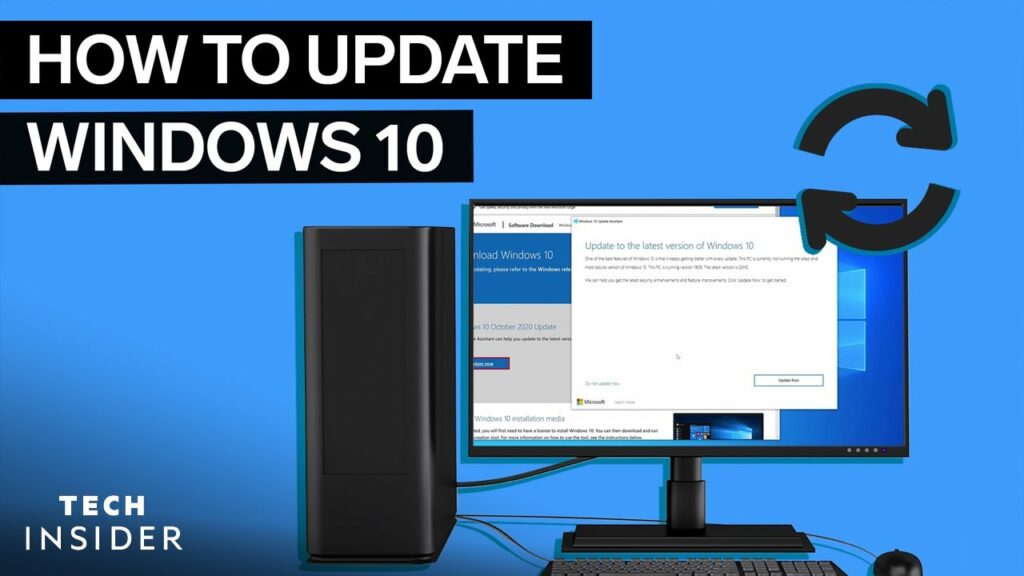Navigating the Digital Frontier: A Comprehensive Guide on How to Update Windows 10

Introduction:
In the ever-evolving landscape of technology, keeping your operating system up-to-date is paramount for security, performance, and access to the latest features. Windows 10, Microsoft’s flagship operating system, is no exception. In this exhaustive guide, we will embark on a journey through the intricacies of updating Windows 10, covering everything from understanding the importance of updates to the various methods of ensuring your system stays current.
Chapter 1: The Importance of Windows 10 Updates
Before delving into the update process, it’s crucial to understand why keeping Windows 10 updated is essential. This chapter will explore the significance of updates in terms of security patches, bug fixes, feature enhancements, and overall system stability. We’ll also discuss how updates contribute to a smoother and more secure computing experience.
Chapter 2: Types of Windows 10 Updates
Windows 10 updates come in various forms, each serving a specific purpose. This chapter will dissect the different types of updates, including cumulative updates, feature updates, and driver updates. Understanding these distinctions is vital for managing the update process effectively and ensuring that your system remains optimized.
Chapter 3: Configuring Windows Update Settings
Customizing your Windows Update settings empowers you to have control over when and how updates are installed. This chapter will guide you through the Windows Update settings menu, explaining options such as automatic updates, active hours, and advanced settings. We’ll help you tailor the update process to suit your preferences and schedule.
Chapter 4: Automatic Updates vs. Manual Updates
The choice between automatic and manual updates is a personal one, depending on your preferences and requirements. In this chapter, we’ll explore the pros and cons of both approaches, offering insights into when automatic updates might be advantageous and when manual updates provide more control.
Chapter 5: Windows Update Troubleshooting
Despite the seamless design of the Windows Update process, issues may occasionally arise. This chapter will equip you with troubleshooting techniques to address common problems, such as update failures, error codes, and slow update downloads. We’ll delve into solutions for a smooth update experience.
Chapter 6: Feature Updates: What to Expect
Feature updates bring significant changes to Windows 10, introducing new functionalities and improving existing ones. This chapter will explore what to expect from feature updates, detailing the update timeline, preview builds, and how Microsoft rolls out these substantial improvements to the user base.
Chapter 7: Installing Cumulative Updates
Cumulative updates are regular smaller updates that address security vulnerabilities, bugs, and performance issues. This chapter will guide you through the process of installing cumulative updates manually, ensuring that your system is always up-to-date with the latest improvements.
Chapter 8: Driver Updates: Keeping Hardware Optimized
Hardware compatibility and performance are closely tied to driver updates. This chapter will explore the importance of updating device drivers, offering insights into the methods of obtaining and installing the latest drivers for your hardware components.
Chapter 9: Leveraging Windows Update for Business
For enterprise users, managing updates on a larger scale is crucial. This chapter will delve into Windows Update for Business, a set of management tools that streamline the update process for organizations. We’ll explore deployment rings, maintenance windows, and other features designed for efficient enterprise-level update management.
Chapter 10: Windows Update Best Practices
To ensure a smooth and effective update experience, adhering to best practices is essential. This chapter will provide a comprehensive set of guidelines, from backing up your system before major updates to creating system restore points and managing disk space efficiently.
Chapter 11: Staying Informed about Windows 10 Updates
Keeping yourself informed about upcoming updates, known issues, and release notes is key to staying ahead of potential challenges. This chapter will explore various resources, such as the Windows Update health dashboard, Microsoft forums, and official communication channels, to help you stay in the loop.
Chapter 12: Future Trends in Windows 10 Updates
As technology advances, the landscape of operating system updates continues to evolve. This chapter will speculate on future trends in Windows 10 updates, exploring possibilities such as increased automation, artificial intelligence-driven updates, and other innovations that may shape the future of operating system maintenance.
Conclusion:
Updating Windows 10 is not just a routine maintenance task; it’s a proactive measure to ensure your system remains secure, stable, and equipped with the latest features. This comprehensive guide has covered every aspect of the update process, from understanding the importance of updates to exploring different types and troubleshooting common issues. As you navigate the digital frontier with Windows 10, embracing the update process is a crucial step towards harnessing the full potential of your operating system. Stay informed, stay secure, and let the power of Windows 10 continually enhance your computing experience.







